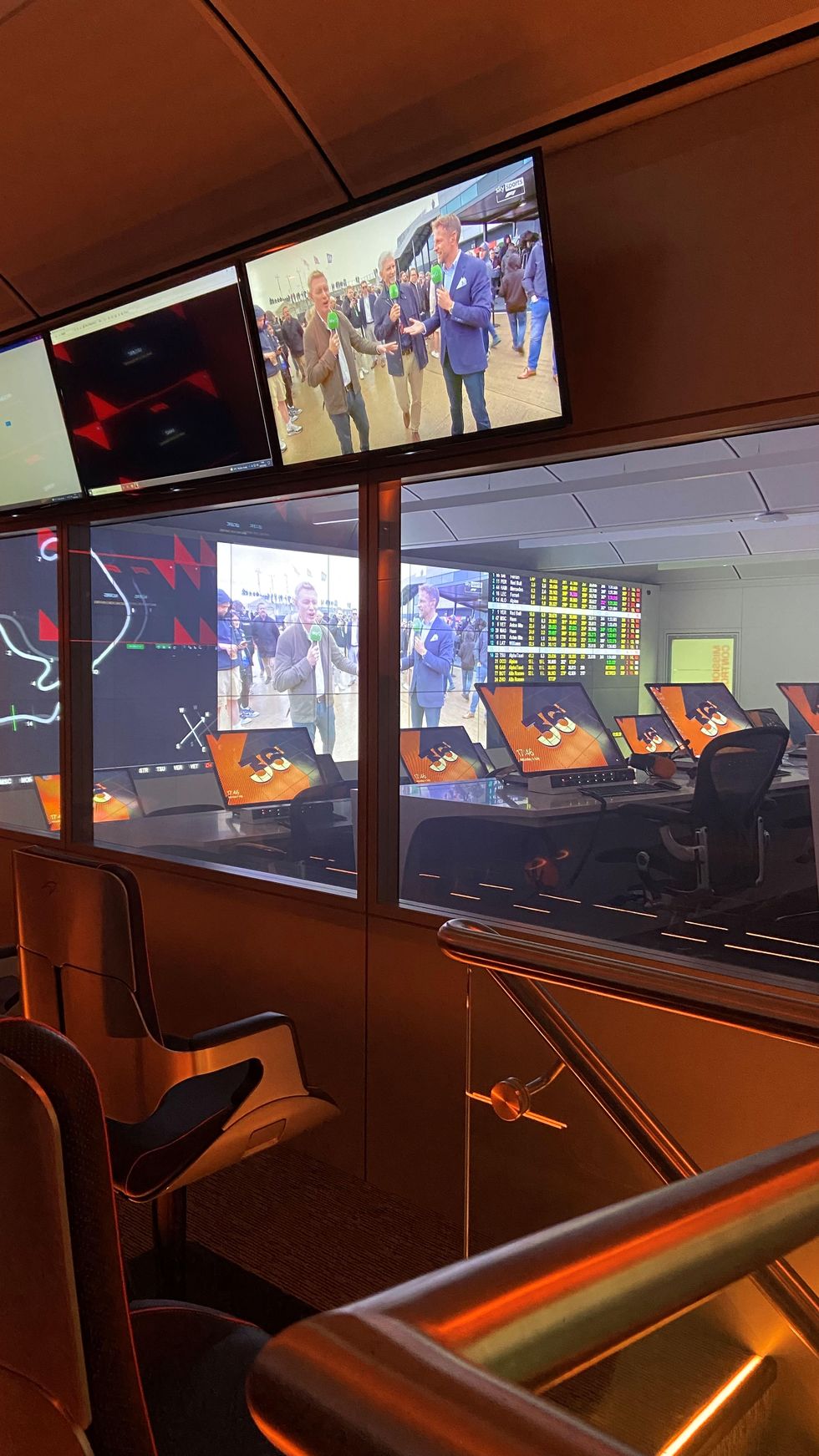Sinead Butler
Jul 24, 2022
McLaren unveils life-size car model using 288,315 Lego bricks
TikTok/McLaren
A record number of fans (142,000) attended this year’s British Grand Prix in Silverstone on Sunday, July 3, but while all eyes were on the track, McLaren’s race analysts were busy strategizing behind the scenes in their Mission Control room.
Based in McLaren’s Technology Centre in Woking, Mission Control is one of the most secretive in the racing world, where race engineers mastermind every race, qualifying and practice session – and indy100 was given exclusive access to the Formula One team’s hub on the all-important race day.
The centre itself is an impressive feat of architecture; a 500,000 sq ft building that overlooks a large lake that can be viewed from the enormous glass windows.
Sign up to our free Indy100 weekly newsletter
Everything in the £300m facility is meticulously designed to motivate a winning mentality within the team – a long corridor is required for their impressive collection of 650 trophies displayed in a glass cabinet along the ground floor.
The location was specifically chosen to motivate staff for them “to get in the right frame of mind,” as they go to work.
Given the F1 team’s previous success over the years, there are an array of past winning race cars on display in the showroom looking out onto the scenic lake, from Ayrton Senna’s iconic McLaren MP44, to Lewis Hamilton’s 2008 championship-winning McLaren MP4-23 as McLaren.
Having such a rich history of motorsport lined up in front of your eyes is a surreal sight, and despite McLaren’s midfield results in recent years, it is clear the team is determined to get back to the top.
Ayrton Senna’s iconic McLaren MP44 displayed at McLaren's Technology Centre in WokingSinead Butler
Despite being nearly 80 miles away from the circuit, more than 70 per cent of the race strategy is actually devised from the Mission Control room, all thanks to their military/aviation style communication system, “to ensure concise and precise messages in order to execute our plans.”
Lights immediately draw your attention when entering Mission Control’s Viewing Gallery as there are monitors everywhere providing live information such as camera feeds from each car on track, data from the McLaren cars of Daniel Ricciardo and Lando Norris, lap times, aerodynamic graphs – with 25 different feeds of information altogether.
It’s difficult to decide which screen to look at as you don’t want to miss any of the action.
The sleek, futuristic set-up has previously been compared to a mini NASA control room, but the interior design also gives off some serious supervillain energy (in the best way).
Given the abundance of information coming in, it is no surprise that between 1.5-1.7 terabytes worth of data gets streamed back to Misson Control on a race weekend, as computers calculate any kind of scenario that could occur in the race.

As the 20 cars on the grid can go from 0 – 60mph in roughly 2.6 seconds and reach speeds of up to 223mph, teams always have to expect the unexpected – and Silverstone was one of those races.
Just seconds into the opening lap, the race was red flagged after a multi-car collision in the midfield with Alfa Romeo’s Zhou Guanyu flipped over and crash-landed over the barriers – luckily he made it out of the car unharmed.
After the restart, it was a mixed bag for McLaren as Norris who started in sixth managed to get up to fourth as he battled with Lewis Hamilton but couldn't hold the Mercedes seven-time world champion off while teammate Ricciardo struggled outside of the points.
Pit stops are an important strategic factor in any race so it was interesting to watch the calm and collected analysts communicate via radio with Ricciardo and Norris on when to box and see what tools they use to assist them.
For example, a clock on the screen calculated when the team should give the order to “box” based on the driver’s location – each time the driver passes the pit entry, the clock is reset to 90 seconds.
Other factors considered in pit stop decisions are a combination of the circuit’s characteristics, the theoretical optimum strategy (based on modelling), the observed optimum strategy (based on what they are measuring live) and the tactical opportunities (i.e. what other teams may do) in order to best time the pit stops.

Norris was in fifth place in front of Alpine’s Fernando Alonso on medium tyres as the team opted to continue on with those, and chose to pit when there was a safety car on lap 40 but unfortunately, Norris lost a place when came out of the pits behind Alonso.
In the end, Norris managed to bring points home for McLaren in sixth, though it was a disappointing day for Ricciardo who finished in 13th position.
It is safe to say there were plenty of ups and downs for McLaren at Silverstone this year, but it was an enthralling experience to watch the action unfold live at the centre of the team’s decision-making in the Mission Control room.
In February this year, Gopuff - a leader in instant delivery - was announced as the Official Instant Delivery Partner of McLaren’s Formula 1 Team. The multi-year agreement comes as Gopuff continues its rapid global expansion and brings together one of the fastest in delivery with one of the most successful teams in motorsport.
Have your say in our news democracy. Click the upvote icon at the top of the page to help raise this article through the indy100 rankings.
Top 100
The Conversation (0)













